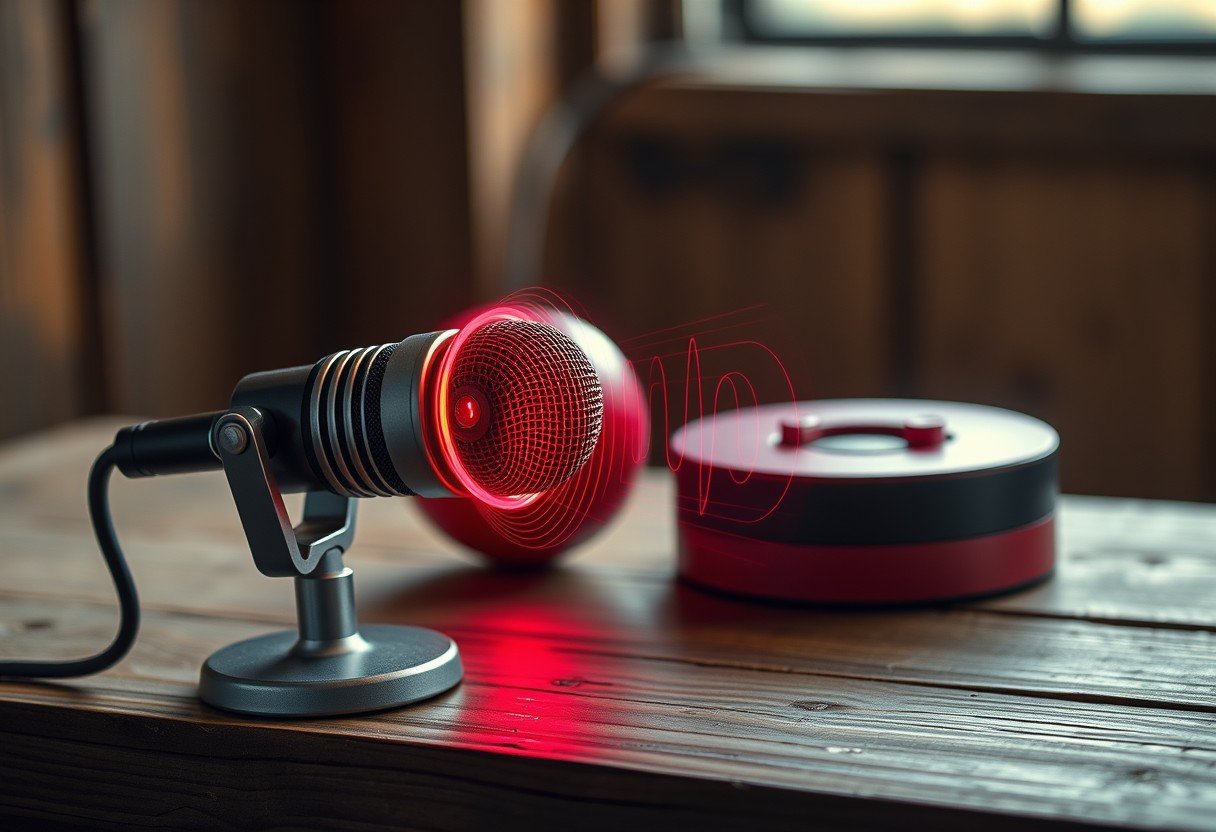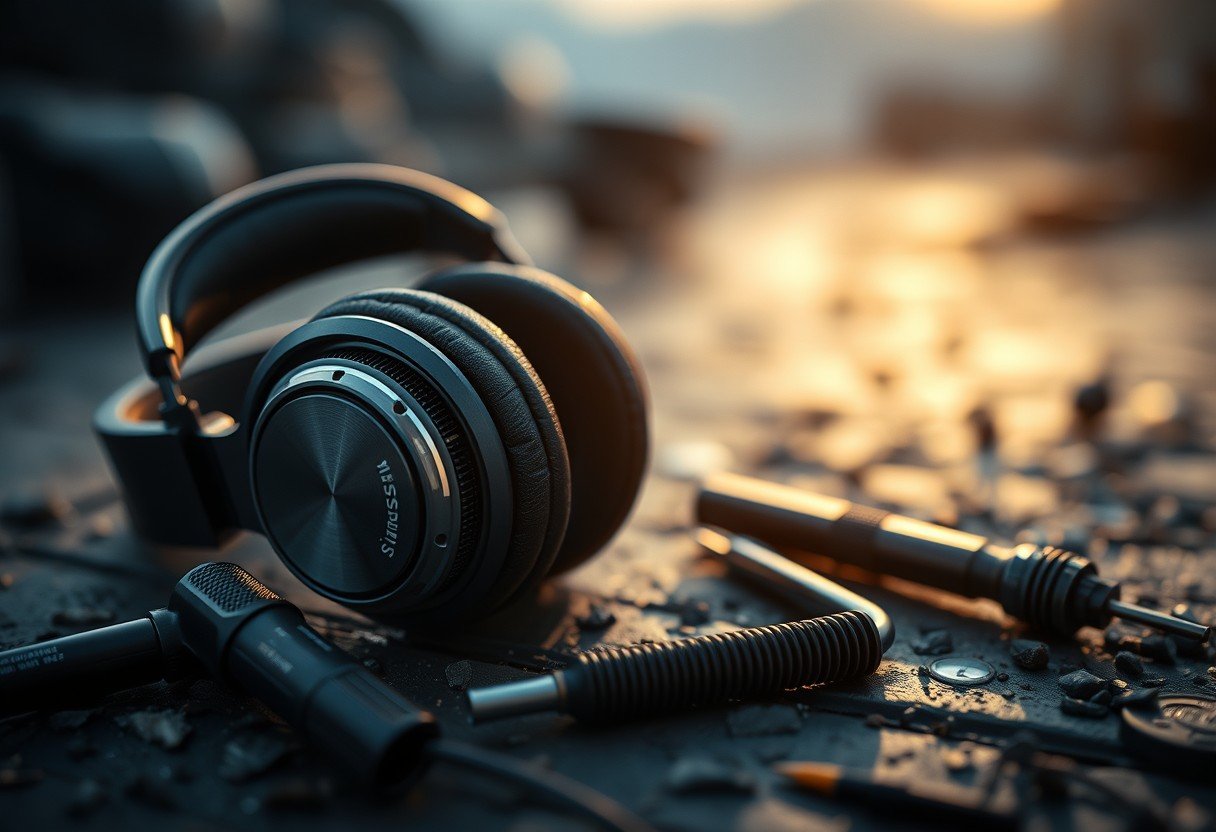Have you ever wondered if that magnet on your desk could mess with your microphone’s sound? The answer is yes, it certainly can. The relationship between magnets and microphones is based on the fundamental principles of how mics capture audio. Understanding this interaction is key to preventing distorted recordings and ensuring your gear performs at its best, whether you’re in a professional studio or a home setup.
How Microphones and Magnets Work Together
To understand why an external magnet can cause problems, you first need to know that many microphones already have magnets inside them. They are essential components that help convert sound energy into an electrical signal.
In the most common types of microphones, this process relies on electromagnetic induction. Sound waves cause a tiny component inside the mic to vibrate within a magnetic field. This movement generates a small electrical current that mirrors the original sound wave.
This internal magnetic system is precisely calibrated, and introducing a strong external magnetic field can disrupt this delicate balance. The external field can either add to or subtract from the internal one, altering the microphone’s intended performance and affecting the audio it captures.
Which Microphone Types are Most Vulnerable?
Not all microphones react to magnets in the same way. The design of the microphone plays the biggest role in how susceptible it is to magnetic interference. Some types are very sensitive, while others are barely affected at all.
Dynamic microphones are one of the most susceptible types. They use a wire coil attached to a diaphragm that moves back and forth within a magnetic field. A strong external magnet can easily interfere with this field, which can change the mic’s frequency response and sensitivity. Ribbon microphones are also highly vulnerable because they use a very thin, delicate metal ribbon suspended between two magnets.
On the other hand, condenser microphones are generally much less affected. Their operation is based on an electrical principle called capacitance and does not rely on a moving coil within a magnetic field. This makes them a better choice for environments with high magnetic interference.
| Microphone Type | Susceptibility to Magnets | Reason |
| Dynamic Microphone | High | Relies on a moving coil in a magnetic field. |
| Ribbon Microphone | High | Uses a thin ribbon vibrating between magnets. |
| Condenser Microphone | Low | Operates on capacitance, not magnetism. |
Common Signs of Magnetic Interference in Your Audio
If your microphone is being affected by a nearby magnet, you’ll likely hear it in your recordings. The interference can manifest in several ways, from subtle changes in sound quality to obvious and distracting noises.
The most common symptom is a low-frequency hum or buzz. This is often caused by electromagnetic interference (EMI) from devices like power amplifiers, speakers, or power transformers, which all contain powerful magnets and generate strong magnetic fields.
You might also notice other issues with your sound.
- Distortion, especially on louder sounds.
- A change in the tonal character of the audio, making it sound “thin” or “colored.”
- Noticeable fluctuations in the microphone’s volume level.
These audio artifacts can ruin a good recording, making it crucial to identify and eliminate the source of the magnetic interference.
Practical Tips to Avoid Magnetic Interference
The good news is that protecting your microphones from magnetic interference is usually straightforward. With a bit of care and awareness in your setup, you can easily avoid most common problems.
The simplest and most effective solution is distance. Keep your microphones, especially dynamic and ribbon types, as far away as possible from any strong magnetic sources. This includes stage monitors, guitar amplifiers, and power supplies. Even a few feet can make a significant difference.
Using high-quality shielded cables is another important step. A well-shielded cable can help protect the weak electrical signal coming from the microphone from being contaminated by external electromagnetic fields on its way to the recorder or mixer. Always check that your cables are in good condition and not frayed.
What Audio Experts Say About Magnets and Mics
While the risk of interference is real, most audio engineers agree that it’s a manageable issue. The consensus is that the impact depends entirely on the strength of the magnet, its distance from the microphone, and the type of microphone being used.
Research studies have confirmed this. In many experiments, professional microphones have shown remarkable resistance to magnetic fields. Most dynamic and condenser mics can operate effectively without noticeable distortion even when exposed to moderate magnetic fields.
However, experts caution that it’s always better to be safe than sorry. Being mindful of your recording environment and taking simple precautions is the best way to ensure you capture clean, high-quality audio every time.
Frequently Asked Questions
Are condenser microphones completely immune to magnets?
No, they are not completely immune, but they are far more resistant to magnetic interference than dynamic or ribbon microphones. Their design does not rely on magnetic principles, so it would take an incredibly strong magnetic field to cause a noticeable issue.
Can the small magnet in my smartphone affect my microphone?
For most microphones, the magnet in a smartphone is far too weak to cause any problems. You would likely need to press the phone directly against a very sensitive microphone, like a ribbon mic, to hear any effect at all.
How far should I keep strong magnets from my dynamic microphone?
There is no exact rule, but a safe practice is to keep strong magnets and devices that produce large magnetic fields (like speakers and amplifiers) at least a few feet away from your dynamic or ribbon microphones.
Is it safe to use a magnetic microphone mount?
Using a magnetic mount can be risky, especially with sensitive dynamic or ribbon mics, as it places a magnet in direct proximity. If you choose to use one, it is essential to test your setup thoroughly for any unwanted hum, buzz, or distortion before starting an important recording.
What are the biggest sources of magnetic interference in a studio?
The most common sources of interference in a studio or on stage are speaker cabinets, power amplifiers, CRT monitors (if you still have one), and large power transformers. Keeping microphones and their cables away from these devices is key.






Leave a Comment